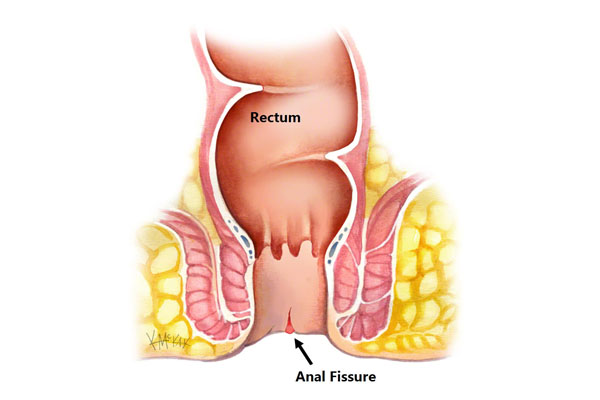Menu
What is a Fissure in Ano?
A fissure in ano, also known as an anal fissure, is a small tear in the lining of the anus. This condition can cause severe pain and bleeding during and after bowel movements. Fissures are typically the result of trauma to the anal canal, often due to the passage of hard stools, prolonged diarrhea, or anal intercourse.

Symptoms of Anal Fissure
- Sharp Pain: Intense pain during and after bowel movements.
- Bleeding: Bright red blood on the stool or toilet paper.
- Itching and Irritation: Persistent discomfort around the anus.
- Visible Tear: A small tear in the skin around the anus.
- Spasms: Muscle spasms in the anal sphincter.
Causes of Anal Fissure
- Constipation: Passing hard or large stools can tear the anal lining.
- Chronic Diarrhea: Frequent bowel movements can cause trauma.
- Childbirth: The strain of childbirth can lead to fissures.
- Anal Intercourse: Can cause direct trauma to the anal canal.
- Inflammatory Conditions: Conditions like Crohn’s disease can increase the risk of fissures.
Diagnosis
Diagnosing an anal fissure usually involves:
- Physical Examination: A visual inspection of the anal area.
- Medical History: Discussion of symptoms and potential causes.
- Anoscopy: A procedure to look inside the anus and rectum if needed.
Treatment Options
Conservative Treatments
- Dietary Changes: Increase fiber intake to soften stools.
- Hydration: Drink plenty of water to stay hydrated.
- Stool Softeners: Help in making bowel movements less painful.
- Sitz Baths: Soak the anal area in warm water to reduce pain and promote healing.
- Topical Ointments: Use of anesthetic creams or nitroglycerin ointment to relax the anal sphincter.
Advanced Treatments
- Botox Injections: To paralyze the sphincter muscle temporarily and promote healing.
- Lateral Internal Sphincterotomy: A surgical procedure to cut a small portion of the anal sphincter muscle, reducing spasm and pain.
- Ayurvedic Ksharasutra Therapy: Involves the application of a medicated thread to promote healing and reduce inflammation.

